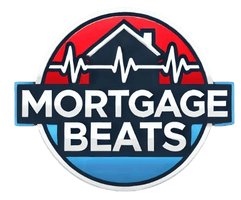Introduction
When it comes to financing a home, there are various options available to meet different needs. Two popular loan types that many prospective homeowners or property investors consider are bridging loans and traditional mortgages. Both options can provide the necessary funds to secure a property, but they serve different purposes and come with distinct advantages and disadvantages. Understanding the differences between bridging loans and traditional mortgages is essential to making the right choice for your financial situation.
Whether you are looking to buy a new home while waiting to sell your existing one or you are simply exploring the various financing options for purchasing property, knowing the pros and cons of each loan type can help you make an informed decision. At NorCal Real Estate & Financial Service, we specialize in helping clients navigate these options and choose the best mortgage or loan product for their specific needs.
In this article, we will explore the differences between bridging loans and traditional mortgages, helping you understand which option is best suited for your home buying or investment goals.
What is a Bridging Loan?
A bridging loan is a short-term loan that is typically used to “bridge the gap” between the purchase of a new property and the sale of an existing property. Bridging loans are ideal for individuals or property investors who need immediate access to capital in order to purchase a new home before they have sold their current one. Essentially, the bridging loan provides temporary financing that allows you to buy the new property, with the expectation that the loan will be repaid once the existing property is sold.
Bridging loans are often used in situations where there is a time-sensitive need to secure a property. For example, if you find your dream home but are unable to complete the sale of your current home quickly enough, a bridging loan allows you to proceed with the purchase while you wait for your current property to sell. These loans can be secured against the property you are purchasing or the one you already own.
The term of a bridging loan is typically short, ranging from a few months to a year. While these loans can be very useful in certain situations, they tend to have higher interest rates compared to traditional mortgages. Therefore, they are typically used as a temporary solution rather than a long-term financing option.
What is a Traditional Mortgage?
A traditional mortgage, on the other hand, is a long-term loan used to purchase a property. The mortgage is typically repaid over a period of 15 to 30 years, with fixed or variable interest rates. Traditional mortgages are the most common form of home financing and are available through banks, credit unions, and mortgage lenders.
Unlike bridging loans, traditional mortgages are designed for buyers who do not need immediate access to capital but rather require financing to cover the entire cost of a home purchase. A traditional mortgage is typically repaid in monthly installments over the life of the loan, and it is secured by the property itself. Because traditional mortgages are long-term loans, they usually come with lower interest rates compared to bridging loans, making them a more affordable option for most homebuyers.
The approval process for traditional mortgages is typically more thorough than that of bridging loans, as lenders assess your financial situation, including income, credit score, and debt-to-income ratio, before providing a loan. While this process can take longer, traditional mortgages offer more stability and predictable monthly payments, which makes them a preferred option for most homebuyers.
Key Differences Between Bridging Loans and Traditional Mortgages
The main differences between bridging loans and traditional mortgages come down to the term, purpose, and repayment structure. Bridging loans are short-term, typically lasting a few months to a year, while traditional mortgages are long-term loans that can last 15, 20, or even 30 years. Bridging loans are typically used for specific, time-sensitive situations, such as buying a new property before selling an existing one, whereas traditional mortgages are used for standard home purchases.
Another key difference is the interest rate. Bridging loans tend to have higher interest rates compared to traditional mortgages because they are short-term and considered riskier by lenders. The high interest rates reflect the lender’s need to be compensated for the short-term nature of the loan and the potential risks involved. Traditional mortgages, on the other hand, typically offer lower interest rates, particularly if you have a strong credit profile.
Repayment schedules also differ. Bridging loans often require repayment in full within a short time frame, while traditional mortgages are repaid through monthly installments over a longer period of time. Bridging loans can sometimes be repaid in one lump sum once the property is sold, while traditional mortgages follow a more structured repayment plan.
Advantages of Bridging Loans
The primary advantage of a bridging loan is the ability to access capital quickly when you need to act fast in the property market. If you find a home that is perfect for you but your current home has not yet sold, a bridging loan allows you to secure the property without delay. This can be particularly useful in competitive housing markets where homes are selling quickly, and waiting for the sale of your current property could mean losing out on your dream home.
Bridging loans offer flexibility because they are not subject to the same lengthy approval process as traditional mortgages. In many cases, bridging loans can be approved within days, allowing you to move quickly. This speed and flexibility are key reasons why they are popular for property investors and homebuyers with time-sensitive needs.
However, the higher interest rates associated with bridging loans can be a downside if the loan is not paid off quickly. If you are unable to sell your current property within the agreed-upon time frame, the cost of the loan can escalate quickly, making it an expensive option. Nevertheless, bridging loans are useful for those who need immediate access to funds and are confident they can repay the loan within a short period.
Advantages of Traditional Mortgages
Traditional mortgages offer several advantages over bridging loans, particularly for buyers looking for long-term financing options. The most notable benefit is the lower interest rates compared to bridging loans. Because traditional mortgages are secured for a longer period, they generally come with lower rates, making them more affordable for homeowners in the long run.
Additionally, traditional mortgages offer predictable monthly payments that make budgeting easier. With fixed-rate mortgages, the monthly payment amount remains the same throughout the life of the loan, providing financial stability. This stability is especially important for self-employed individuals or those with fluctuating incomes, as it allows you to plan your finances with certainty.
Another advantage is the longer repayment term. Traditional mortgages typically offer terms of 15, 20, or 30 years, allowing for more manageable monthly payments. With longer repayment periods, buyers have more flexibility in terms of their budget and can invest in larger properties with lower monthly payments. This makes traditional mortgages a more accessible option for most buyers compared to short-term, high-interest bridging loans.
When Should You Consider a Bridging Loan?
Bridging loans are best suited for specific situations where you need quick access to funds but are confident you can repay the loan within a short time frame. These loans are ideal for buyers who need to purchase a property before selling their current one, especially in a competitive market where waiting could result in losing out on a property. Bridging loans are also useful for property investors who need to quickly secure a property to capitalize on an opportunity.
For self-employed borrowers, bridging loans can be a good solution when income fluctuations make it difficult to secure long-term financing immediately. The fast approval process of bridging loans can help self-employed individuals move forward with property purchases while they finalize other financial matters. However, it’s essential to have a clear plan for repaying the loan once your current property is sold to avoid high-interest costs.
At NorCal Real Estate & Financial Service, we guide you through the process of securing a bridging loan, ensuring you understand the risks and rewards of this financing option before you proceed. We also help you evaluate whether this loan is the best choice based on your financial situation and long-term goals.
When is a Traditional Mortgage the Best Option?
A traditional mortgage is the best option for most homebuyers, particularly if you have a steady income and are planning to live in the property for a long time. If you don’t need to purchase a property quickly and can wait for your current home to sell, a traditional mortgage is a more cost-effective solution due to its lower interest rates and longer repayment terms.
If you are a first-time homebuyer or have a stable job with predictable income, a traditional mortgage offers the financial security and predictability that can help you manage your monthly budget. Additionally, if you don’t need immediate access to capital and can plan your home purchase in advance, a traditional mortgage is a better long-term investment.
At NorCal Real Estate & Financial Service, we provide expert guidance to help you determine if a traditional mortgage is right for you. Our team works with you to assess your financial situation, ensuring that you secure the best mortgage rate and terms available.
How NorCal Real Estate & Financial Service Can Help You Choose the Right Loan
At NorCal Real Estate & Financial Service, we specialize in helping our clients navigate the complex world of home loans, whether you are considering a bridging loan or a traditional mortgage. Our experienced team works closely with you to understand your financial goals and guide you through the decision-making process, ensuring you choose the loan that best suits your needs.
We provide access to a wide range of loan products and offer personalized advice that takes into account your income, credit score, and long-term goals. Whether you are in need of short-term financing or a long-term mortgage solution, our team is here to help you make the best financial decision.
By working with NorCal Real Estate & Financial Service, you’ll benefit from our expert knowledge, clear communication, and commitment to finding the right loan for your situation.
Conclusion
Understanding the differences between bridging loans and traditional mortgages is essential for making the right choice when it comes to home financing. Bridging loans are ideal for short-term, time-sensitive situations, while traditional mortgages provide long-term stability and affordability for most homebuyers.
At NorCal Real Estate & Financial Service, we help you evaluate your financial situation, goals, and needs to determine the best loan product for you. Our team is committed to helping you navigate the home financing process with ease, ensuring you secure the best possible terms for your home purchase or investment.
If you’re ready to explore your loan options, contact NorCal Real Estate & Financial Service today. Let us help you make an informed decision that supports your long-term financial success.
Ready To Get The Best Financial Advise, Email us at: Chris@mortgagebeats.com



